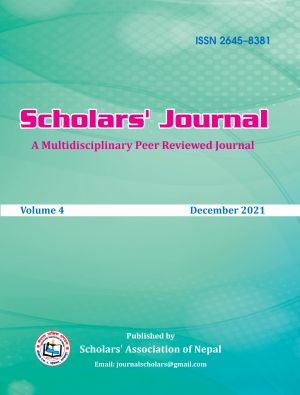Sublimity and Defamiliarisation in Buddha’s the Dhammapada
DOI:
https://doi.org/10.3126/scholars.v4i1.42463Keywords:
Aesthetic ecstasy, defamiliarisation, eternal truth, sublimity, transportAbstract
This article aims to explore and interpret Buddha’s sayings in the Dhammapada from the perspective of defamiliarisation theorised by Shklovsky and sublimity postulated by Longinus. The Dhammapada is an assemblage of Buddha’s precepts in verses. In this book, Buddha’s words ignite the power and transport the readers in the realm of ecstasy. It is because of the perfect use of sublime and defamiliarisation. Every verse divulges the eternal truth in simple, but powerful words because it synthesises the sources of the sublime categorised by Longinus namely divine inspiration, vehement passion, use of rhetorical tropes, noble diction, and elevated composition. So, Buddha’s words possess power, and have been captivating the readers throughout the ages. Likewise, Buddha’s sayings in the Dhammapada have attained a pinnacle when they irradiate the eternal truth with the use of familiar words in an unfamiliar way. Even the simple words crystallise the genuine truth. In this sense, they use the dynamics of defamiliarisation projected by Shklovsky. In this way, the Dhammapada enthralls humanity endlessly because it yokes defamiliarisation with sublimity. This article implements the exploratory method of the qualitative approach to research to achieve its objectives. Thus, this study introduces a new dimension, revisiting the great heritage of Eastern philosophy from the standpoint of western literary theories.
Downloads
Downloads
Published
How to Cite
Issue
Section
License
Copyright (c) 2021 Sabindra Raj Bhandari

This work is licensed under a Creative Commons Attribution-NonCommercial 4.0 International License.
Copyright © The Authors

